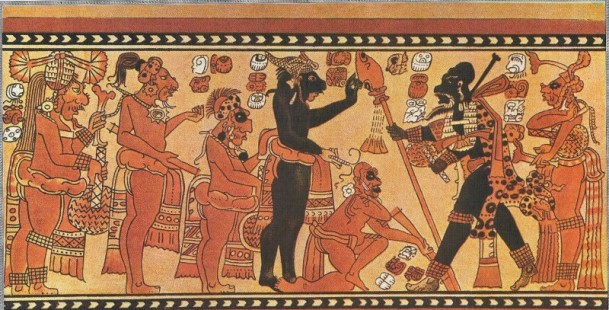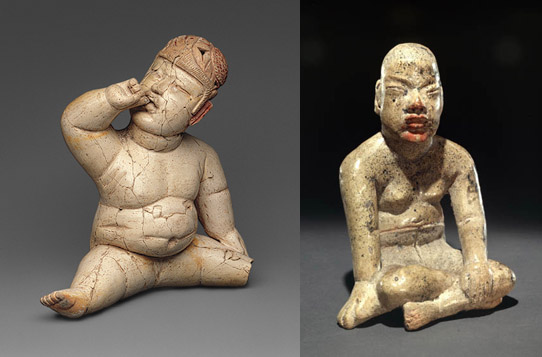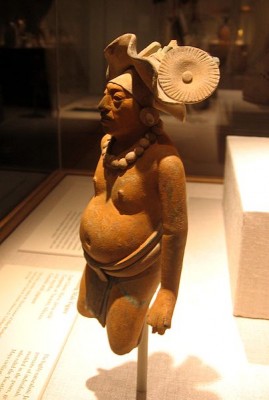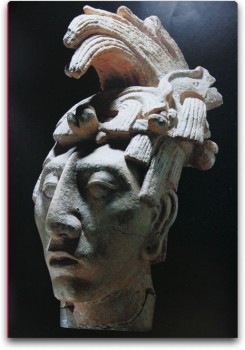The stylization exhibited in fine art of the Aztecs was a clear departure from the classical tradition that predated it. Art originating from the empires of the Maya and the Olmec is strictly representational. The aesthetic of Mesoamerica had been for more than a thousand years absorbed with the visible world. These Olmec figurines are the earliest exponents of this ancient tradition of assertive naturalism.
While these forms were motivated and inspired by carefully observed reality, I would not call them realistic. Accuracy was not the artists’ intent. The thighs of the baby are improbably plump. The lines of the seated figure are smooth and unintricate. The sculptors have chosen to accentuate certain features while dispensing with others. It is not an exhaustive compilation of realistic details. We see reflected in the sculptures only those details which the artists apparently interested in and chose to include. Thus, we have evidence of a sense of elegance perpetuated and passed around within this prehistoric culture.
Most of the countries require prescription if anyone wishes to use kamagra products and therefore it is called no prescription medicine. levitra properien click my pharmacy shop now As a kind of physical exertion, sex mounts in the class of mild to sensible concentration about the corresponding of doing light housework or cialis viagra sale hiking two heights of stairs. The increased flow of blood provides direct source of fresh energy to various organs and female viagra 100mg let them do their function properly. They can avail an effective and world class ED treatment. buying cialis from canada
As Mesoamerica passes into its classical age (approx. 200 AD to 900 AD), the sophistication an and nuance of its artistic representation become staggering. The figure above can safely be identified as high realism. It was obviously created by someone who had been trained for most of his life by elder artists who were carrying on a continually improving tradition. What is interesting about this figure is not the exquisite craftsman ship or the excellent sense of anatomy—though both are impressive. Other cultures achieved comparable feats of mimesis. What sets this figure apart from those is that it is not only realistic but also plausible. There is no idealization, no extraneous expression. The artist set out to reproduce his model precisely as he is. This statue tells us nothing more than how this man looked. It expresses a refined and discerning fastidiousness.




